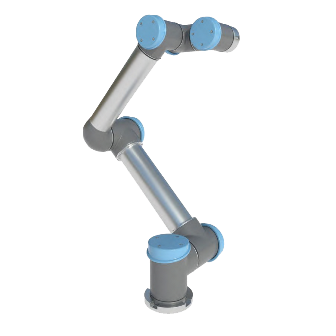Collaborative automation is a relatively new form of industrial automation. Instead of implementing traditional industrial robots, cobots are used to allow for a collaborative work environment with human workers. Despite not having been around for very long, collaborative automation has become one of the biggest trends in manufacturing. Its fast growth can be attributed to the many advantages it has to offer.
- • Easy to Implement - Collaborative automation is easy to implement as cobots can truly be used right out of the box. The Universal UR5 can be up and running within minutes with its intuitive programming and use. There is little to no learning curve, meaning anyone regardless of industrial robotic arm experience can operate a cobot.
- • Enhances Work of Employees - Collaborative robots can take over dangerous, tedious, and repetitive tasks from employees. This allows workers to focus on more higher value processes. Employee work becomes more efficient by eliminating undesirable tasks from their daily responsibilities. The FANUC CR-15ia can automate repetitive processes such as lifting, retrieving, or packaging parts.
- • Increase Productivity - Implementing collaborative automation will give your productivity rates a boost. Automating busy work with cobots allows employees to focus on more critical aspects of a production. Production lines become optimized as humans and cobots work together. Productivity rates can increase by up to 85% with collaborative automation.
- • Improve Accuracy - Collaborative automation can help mitigate human errors. Since collaborative robots can take over busy work from employees, they can be more focused on their work, reducing the likelihood of errors occurring. Cobots assist workers with multitasking and help guide them through processes which will ultimately improve accuracy.
- • Greater Flexibility - Collaborative automation provides greater flexibility within productions. Cobots can easily be reassigned tasks with their hand guidance programming. They are also small enough that they can easily be moved around production floors. When a new need arises the Universal UR10 can be redeployed for the new process. Productions with short or variable cycles can benefit from the added flexibility of collaborative automation.
- • Quick Changeovers - Implementing collaborative automation allows for quick changeover times. Since cobots can be programmed within minutes, changeovers can take place quickly, avoiding costly downtime. The short changeover times of cobots makes collaborative automation a cost-effective solution for those with a high mix of products.
- • Address Labor Gaps - Collaborative automation is also ideal for addressing times when there are gaps in labor. This may be due to busier periods in a manufacturer’s productions or labor shortages. Cobots can take over where needed as they can easily adapt. With collaborative automation, companies can scale up their productions when needed without incurring the additional costs of hiring temporary labor or renting extra machinery.
- • Affordable to Implement - In general , collaborative automation is one of the more affordable forms of industrial automation. Cobots can be less expensive than other factory robots and they require less equipment as they do not need the same safe guarding as traditional robotic manipulator. Their out of the box setup eliminates costly installations and engineering that other automation systems require. Their ease of use means little time is needed for employee training. All of these factors translate to a more affordable automation solution.
Robots Done Right is the place to start when it comes to used robots. Contact us if you are interested in buying or selling your used robot.
